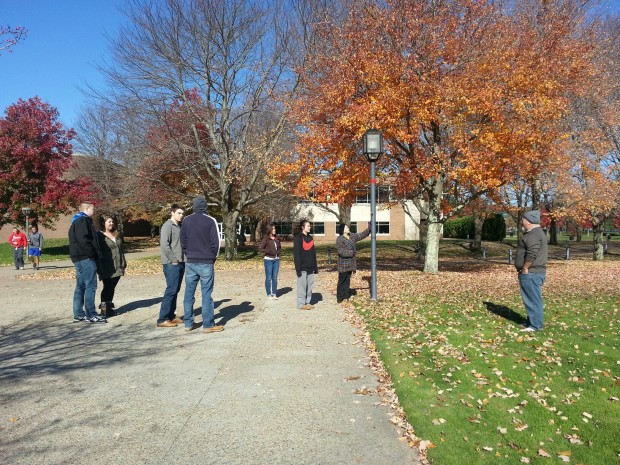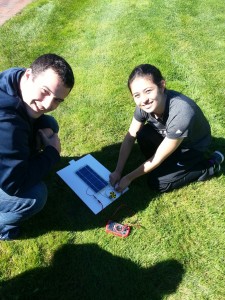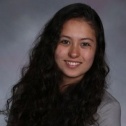We have much more to do and your continued support is needed now more than ever.
Bryant University Student Brings Solar Energy to Campus
Guest post by Jessica May Vickers
Almost fifteen months ago I felt both excitement and trepidation when I received the news that my application for No Light Left Behind, a feasibility analysis for the implementation of solar photovoltaic panels in Bryant University’s outdoor lighting systems had been accepted by the National Wildlife Federation Emerging Leaders Fellowship Program. While I felt excited that I would have a wonderful opportunity to help improve the university’s overall sustainability culture I also felt trepidation with how my project would be received by different stakeholders in the university. As the months passed I have realized that by taking every opportunity to expose and explain my project to as many different stakeholders as possible my trepidation was uncalled for. No Light Left Behind has been met with positive fervor, enthusiasm and constructive criticism leaving room for improvement.

Photo Credit: Allison Hubbard

Photo Credit: Stephanie Benowitz
Secondly during ReDAY, I also had the opportunity to create a poster board highlighting key points of No Light Left Behind. This poster was part of a session named the College of Arts and Sciences: The Bryant Experience. This student gallery offered a broad look at the academic work and activities that students believed was particularly important and positively impacted their Bryant University experience. I manned my poster for a span of two hours during which students or faculty stopped by and asked questions about the project. A key stakeholder who expressed support for my project was the Dean of the College of Arts and Sciences.
Gaining different stakeholder perspectives has value and importance because bringing in different perspectives often results in more innovative ideas. Bringing together different stakeholder perspectives in forums like the previously mentioned sustainability panel leads to more effective and accurate decision making. In the future, I hope to take on more leadership roles to continue creating collaborative environments that would bring together different stakeholders to enact positive change.
About the author
 Jessica May Vickers was a 2013 NWF Campus Ecology Fellowships and graduated this May from Bryant University with a degree in Environmental Science and Business Management. This Fall Jessica will begin the Master of Environmental Studies program at the University of Pennsylvania, majoring in environmental sustainability. Jessica’s passion lies in sustainable innovation and the integration of sustainability initiatives into business strategies.
Jessica May Vickers was a 2013 NWF Campus Ecology Fellowships and graduated this May from Bryant University with a degree in Environmental Science and Business Management. This Fall Jessica will begin the Master of Environmental Studies program at the University of Pennsylvania, majoring in environmental sustainability. Jessica’s passion lies in sustainable innovation and the integration of sustainability initiatives into business strategies.
Learn more about Jessica’s work on NWF’s EcoLeaders Community.





















